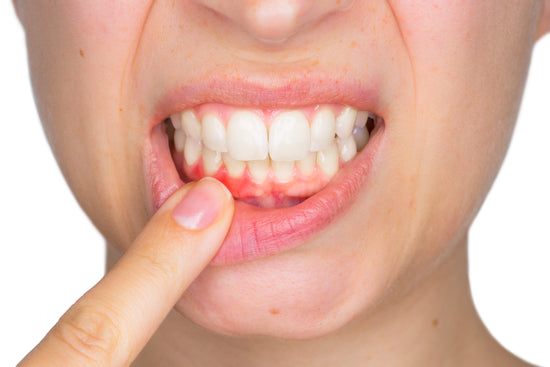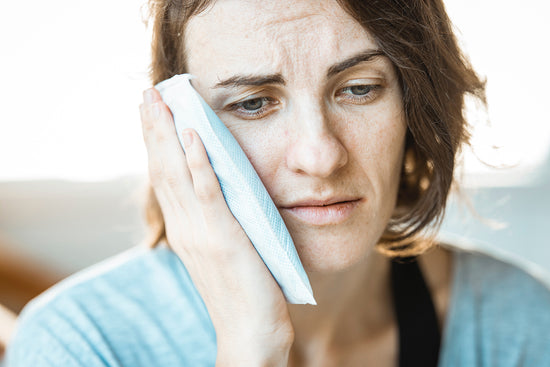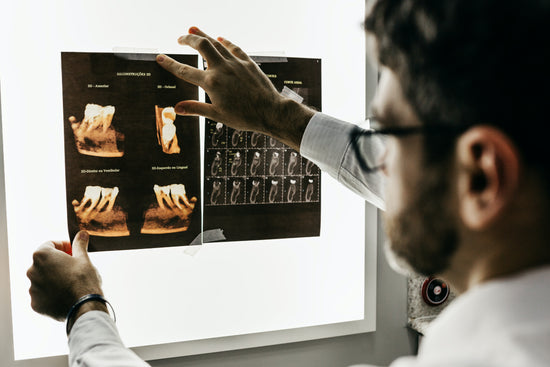 It seems like everyone wants whiter teeth these days. This would explain why at-home whitening strips, kits, and devices have become so popular. Your smile is a reflection of your health and how confident you feel. So, wanting to get rid of plaque and yellowed or stained teeth shows that you care about your oral health and are committed to personal self-care.
It seems like everyone wants whiter teeth these days. This would explain why at-home whitening strips, kits, and devices have become so popular. Your smile is a reflection of your health and how confident you feel. So, wanting to get rid of plaque and yellowed or stained teeth shows that you care about your oral health and are committed to personal self-care.
And it does seem to pay off. Social experiments and studies have shown that people with whiter and more appealing teeth tend to do better at job interviews, receive higher salaries, have more friends, and seem friendlier than people who don’t. You could almost say that investing in teeth whitening and cosmetic dentistry treatments is an investment in your personal and social life.
But what’s the easiest, safest, and most convenient way to whiten your teeth? It just may be a whitening toothbrush.
What is a Whitening Toothbrush?
Most teeth whitening methods (including at-home teeth whitening kits) primarily whiten your teeth by removing the topical stains on the tooth surface. The downside is that they usually involve abrasive ingredients or harsh chemicals that you apply directly onto your teeth. And it’s difficult to confine the chemicals to just your teeth -- they often end up getting on your gums, which can harm them or lead to chronic tooth sensitivity.
Fortunately, there’s an easier and safer way to get your teeth whiter, and that’s by using a toothbrush that incorporates blue light. Using blue light toothbrush technology is effective because it kills germs while gently whitening your teeth, thereby making it easy to incorporate the stain oxidation process of an in-office teeth whitening treatment into your daily oral hygiene routine.
Blue light toothbrushes harness the proven whitening power of light energy. The FDA and ADA recognize blue light for its teeth whitening effects, and numerous studies show that blue light is an excellent activation agent for peroxide (either in the form of hydrogen peroxide or carbamide peroxide) contained in toothpaste or tooth gel. One blue light study showed that a blue light toothbrush can lighten teeth on its own. But for the most part, a blue light toothbrush safely works as a whitening accelerant in conjunction with your favorite whitening gel and toothpaste when used as directed. So daily use of a blue light toothbrush will contribute to and help maintain your whitening progress every time you brush your teeth, not just the time you set aside to sit with a bleaching tray in your mouth.
How Does it Whiten Teeth?
Blue light technology works similarly to the same-day whitening process you get in your dentist’s office. The light itself absorbs the dark pigments and stains that have settled down into your porous tooth structure (microtubules.) These pigments may be prone to bleaching as chemical bonds are broken by a resonating wavelength of light. The blue light interacts with the pigment to form free radicals that kill the harmful bacteria. Without that bacteria in your mouth, the matrix which is needed to adhere plaque to teeth is weakened. Less bacteria lead to less plaque which can lead to healthier teeth and gums.
When used as directed, the blue light may lighten your teeth several shades by accelerating the bleaching product you apply to the brush. With just two minutes a day twice a day, it’s likely that you will see an accumulative difference in the whiteness and brightness of your teeth.
How a Whitening Toothbrush Compares to Other Whitening Methods
The best teeth whitening method for you will depend on how much you have to spend, how quickly you want to see results, how permanent you want it to be, and how much discomfort you’re willing to go through.
Here are a few things to consider when choosing your whitening method:
- Chemicals: Most teeth whitening products use gels made out of carbamide peroxide or hydrogen peroxide that have to sit on top of your enamel for an extended period of time to remove stains from teeth. As the gels penetrate the surface stains and pores (tubules), the discoloration is gradually oxidized. They can be harsh and abrasive.
- Time: In most cases, you use in-home whitening products for about 30 minutes to 60 minutes per day. Some products even require you to leave them on overnight.
- Sensitivity: Tooth sensitivity is a common side effect of teeth whitening. Most often it’s caused by the bleaching solution that’s applied to whiten teeth. This solution can remove minerals within the enamel and cause the teeth to become temporarily porous, which exposes microtubules within the teeth.
A blue light toothbrush allows you to gently and gradually whiten your teeth in two minutes twice a day without causing sensitivity.
Can You Whiten Teeth Just by Using a Whitening Toothbrush?
Yes, you can whiten your teeth gradually and gently by only using a blue light toothbrush, but it works best when there’s a whitening product to activate while you’re using it. So be sure to pair it with a gel or toothpaste that contains nonabrasive teeth bleaching ingredients to boost effects.
What Does it Cost to Whiten My Teeth at Home with a Whitening Toothbrush?
You’re already brushing your teeth every day to remove plaque and keep your gums healthy. Investing in a whitening toothbrush can make your oral care routine more efficient without the risks, additional time and effort or added costs of using something that could make your teeth sensitive. Like any type of electric toothbrush, you’ll need to occasionally replace the head as the bristles wear out. However, blue light whitening toothbrushes are comparable to the price you would spend on many other types of electric toothbrushes. So why not choose the one that helps remove stains from your teeth while you use it?
Is a Whitening Toothbrush Right for Me?
Studies have shown that electric toothbrushes leave you with cleaner teeth and healthier gums, making them a smart investment if you’ve ever had issues like gingivitis or bad breath. By choosing a brush that also whitens your teeth as you use it, you can limit tooth stain and prevent new stains from forming. With whiter and healthier teeth, you’ll have the confidence you need to smile for photos, laugh in front of new friends, and make that important first impression when it matters most.
As always, talk to your dentist before you start a home whitening routine. You’ll want to be sure that you don’t have any active cavities or periodontal infections. Getting a professional cleaning before you start whitening will help your new toothbrush target the deep stains more effectively for dramatically whiter teeth.
Note: All whitening techniques will only work on your natural teeth; any dentures, crowns, bridges, fillings, veneers, or implants will remain the same color.
Sources:
- Influence of self-esteem and negative affectivity on oral health-related quality of life in patients with partial tooth loss.
- How to nail a job interview with your smile.
- Light augments tooth whitening with peroxide.
- A study of hydrogen peroxide chemistry and photochemistry in tea solution with relevance to clinical tooth whitening.
- Dental Bleaching Using Violet Light Alone: Clinical Case Report.
- Manual versus powered toothbrushes: a summary of the Cochrane Oral Health Group's Systematic Review. Part II.
- 5 Best Tooth Brushes for Super White Teeth.
- Does LED Teeth Whitening Really Work?
- Review of the Effectiveness of Various Tooth Whitening Systems.
- Teeth Whitening Costs and Different Treatment Options Explained.


